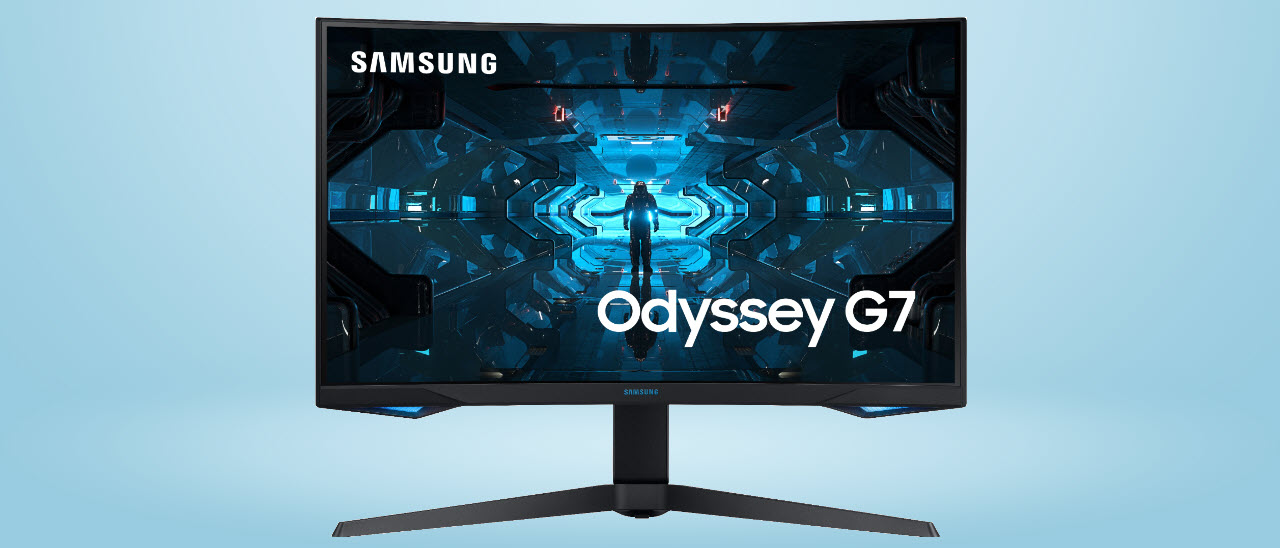Why you can trust Tom's Hardware
To read about our monitor tests in-depth, check out Display Testing Explained: How We Test PC Monitors. We cover brightness and contrast testing on page two.
Uncalibrated – Maximum Backlight Level
In addition to the Odyssey G7, we have two other 32-inch VA displays in our database: the Gigabyte G32QC and Dell S3220DGF. Samsung also brings speedy operation with its 27-Inch CRG5 240 Hz monitor. We also threw in our two most recently reviewed speed demons, the 360 Hz Asus ROG Swift PG259QN and 280 Hz Asus TUF VG259QM.
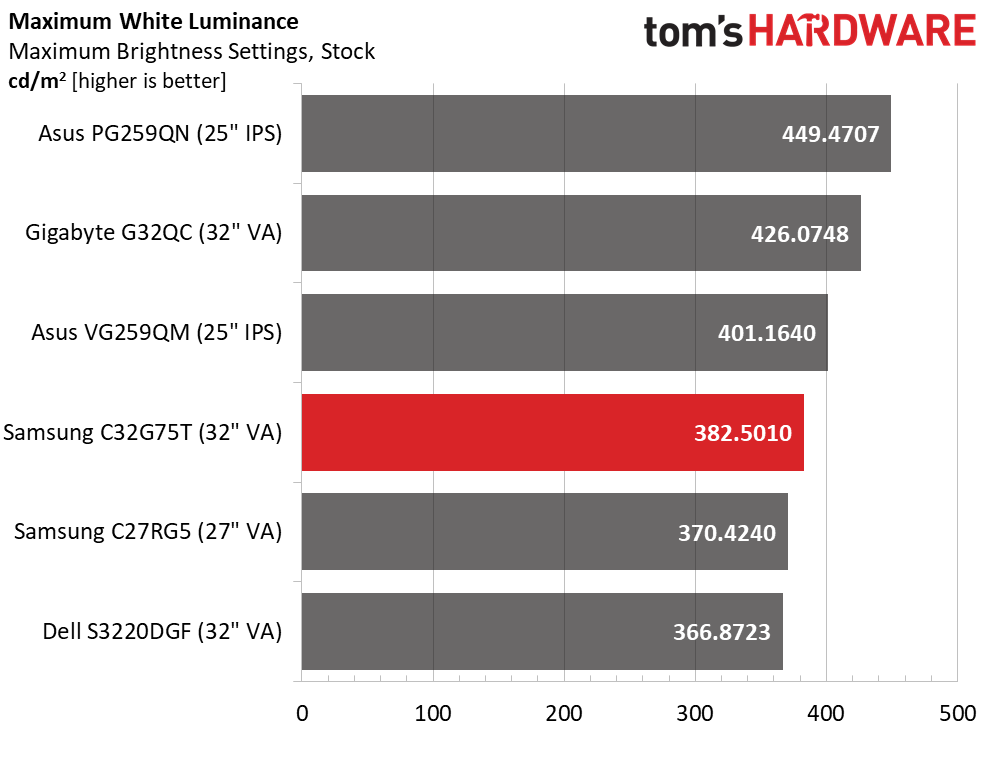
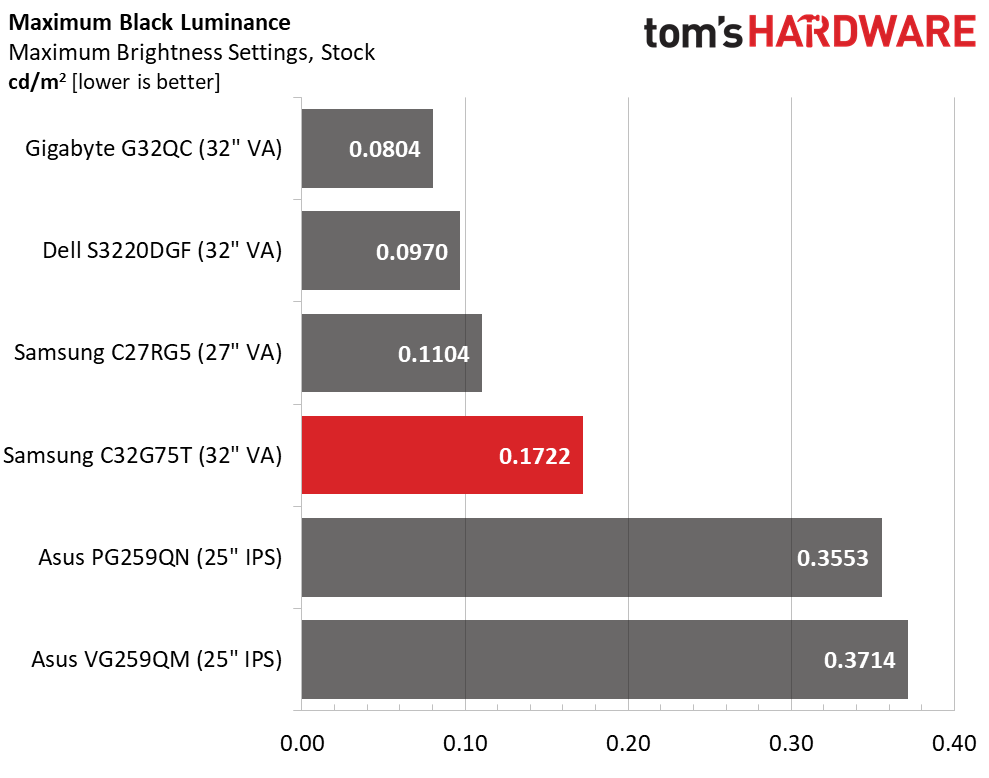
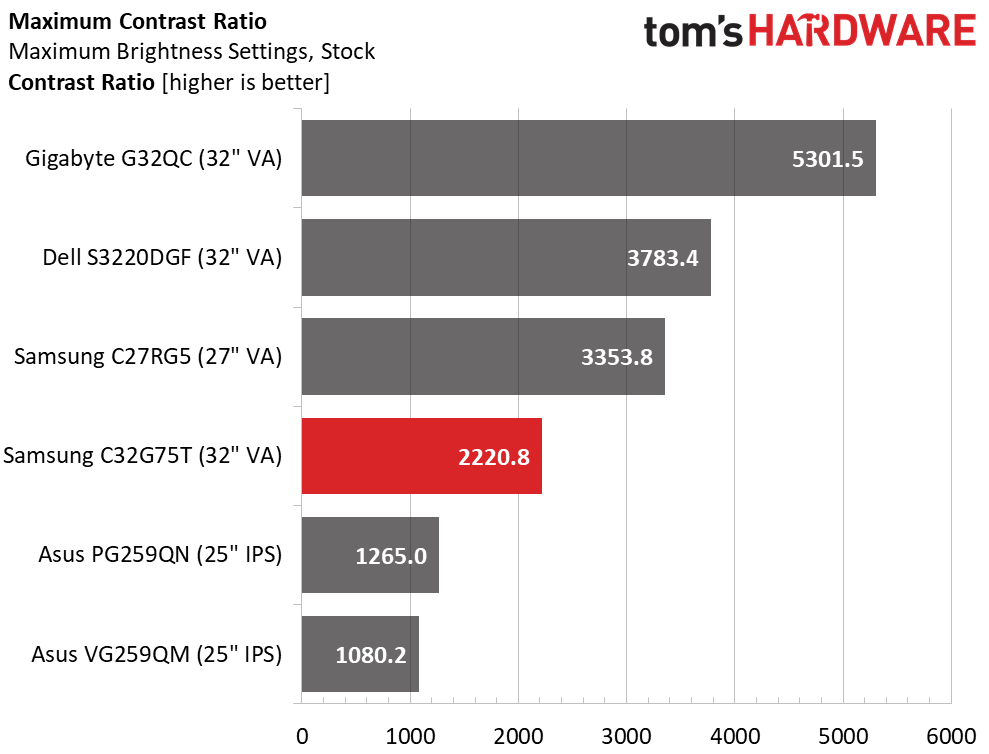
Samsung rates the 32” Odyssey G7 as hitting 320 nits brightness for SDR signals, but our sample was comfortably over 380 nits. That much light from such a large screen is enough to illuminate a small room. Bigger screens don’t need to exceed 400 nits in SDR mode to provide enough output for a good picture.
The four VA panels have less than half the black level luminance of the two IPS monitors from Asus. The C32G75T has the highest black level of that four, but it’s still lower than any IPS or TN display can muster. Resulting contrast is a little low for a VA monitor, 2220.8:1. That figure rises to around 4,000:1 if you turn the local dimming on for SDR signals. There is no downside to this option, so we recommend using it.
After Calibration to 200 nits
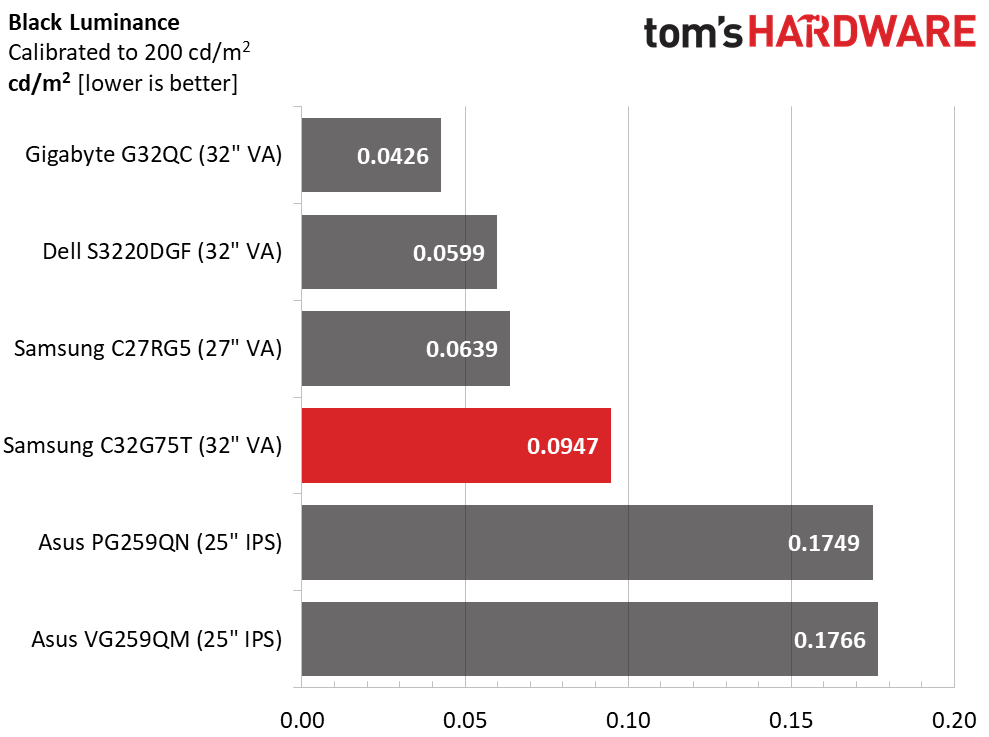
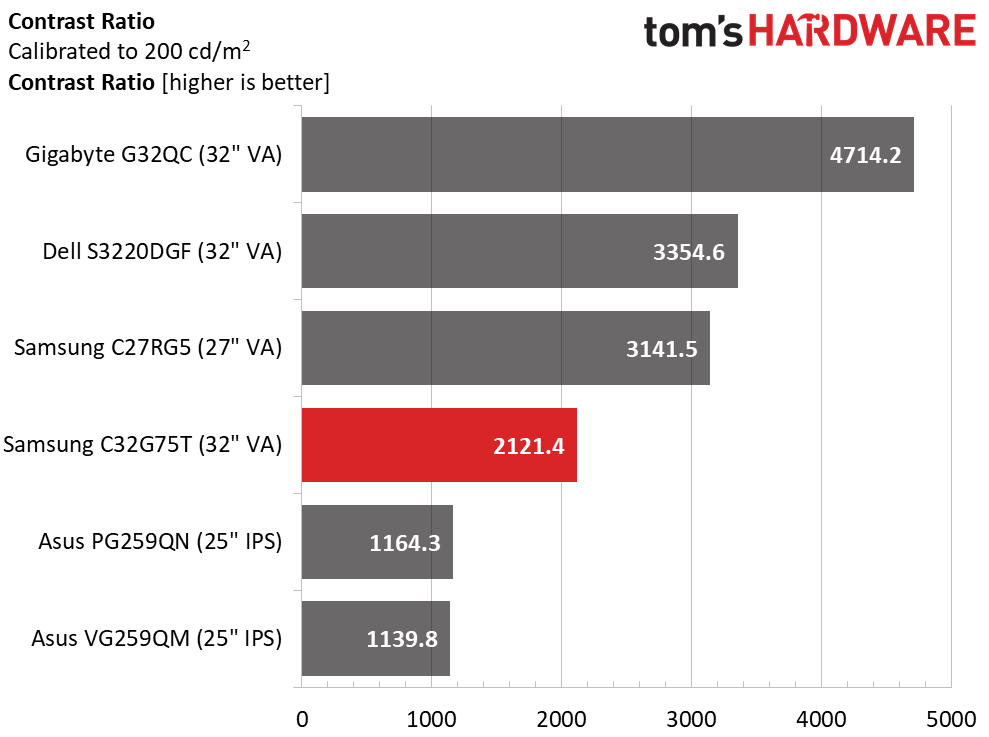
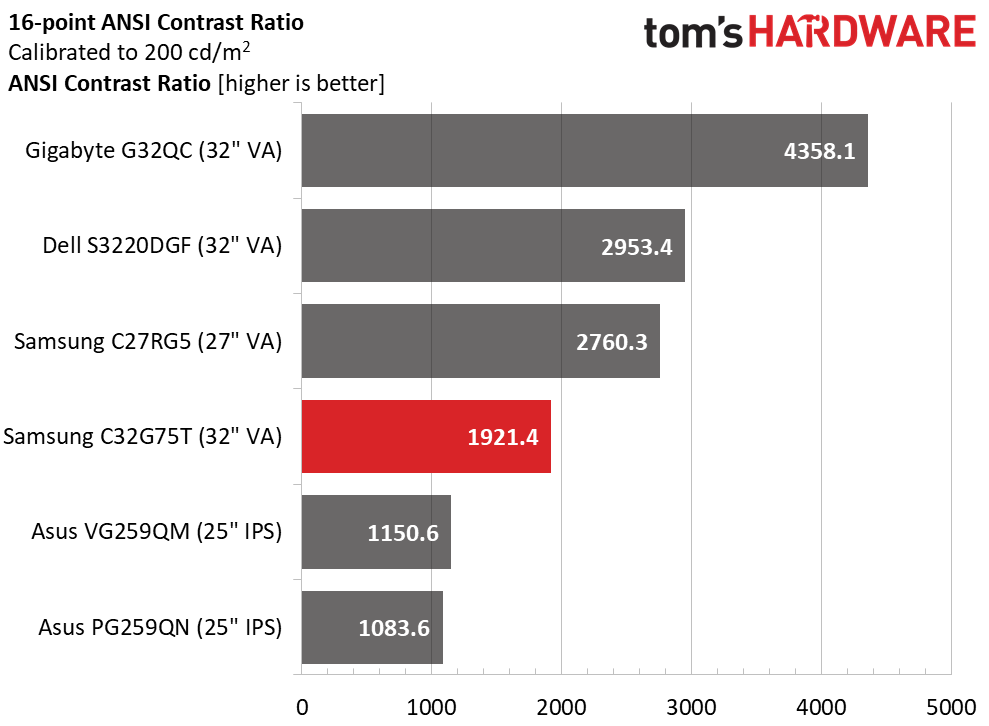
Our calibrated black level and contrast measurements are taken with local dimming turned off to show the panel’s native response. The top three VA monitors still beat the Odyssey G7 by a smidge, but the Samsung still delivers a deep and dimensional image with saturated color and true blacks.
ANSI contrast is a respectable 1,921.4:1. Although other VA monitors can do better, this is not a deal-breaker. The 32” Odyssey G7 has many other virtues which make this a non-issue.
Get Tom's Hardware's best news and in-depth reviews, straight to your inbox.
Current page: Brightness and Contrast
Prev Page Features and Specifications Next Page Grayscale, Gamma and Color
Christian Eberle is a Contributing Editor for Tom's Hardware US. He's a veteran reviewer of A/V equipment, specializing in monitors. Christian began his obsession with tech when he built his first PC in 1991, a 286 running DOS 3.0 at a blazing 12MHz. In 2006, he undertook training from the Imaging Science Foundation in video calibration and testing and thus started a passion for precise imaging that persists to this day. He is also a professional musician with a degree from the New England Conservatory as a classical bassoonist which he used to good effect as a performer with the West Point Army Band from 1987 to 2013. He enjoys watching movies and listening to high-end audio in his custom-built home theater and can be seen riding trails near his home on a race-ready ICE VTX recumbent trike. Christian enjoys the endless summer in Florida where he lives with his wife and Chihuahua and plays with orchestras around the state.
